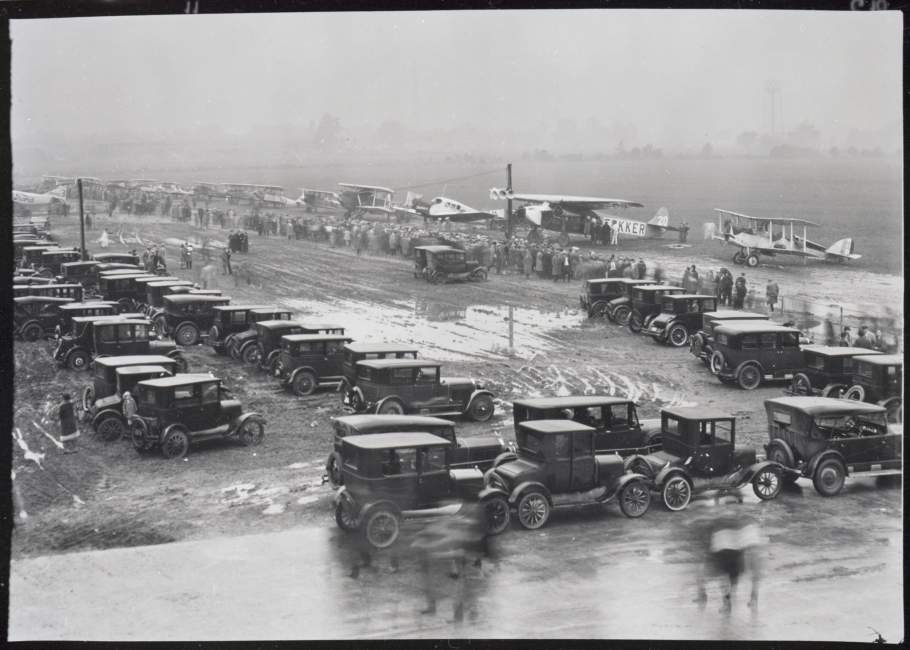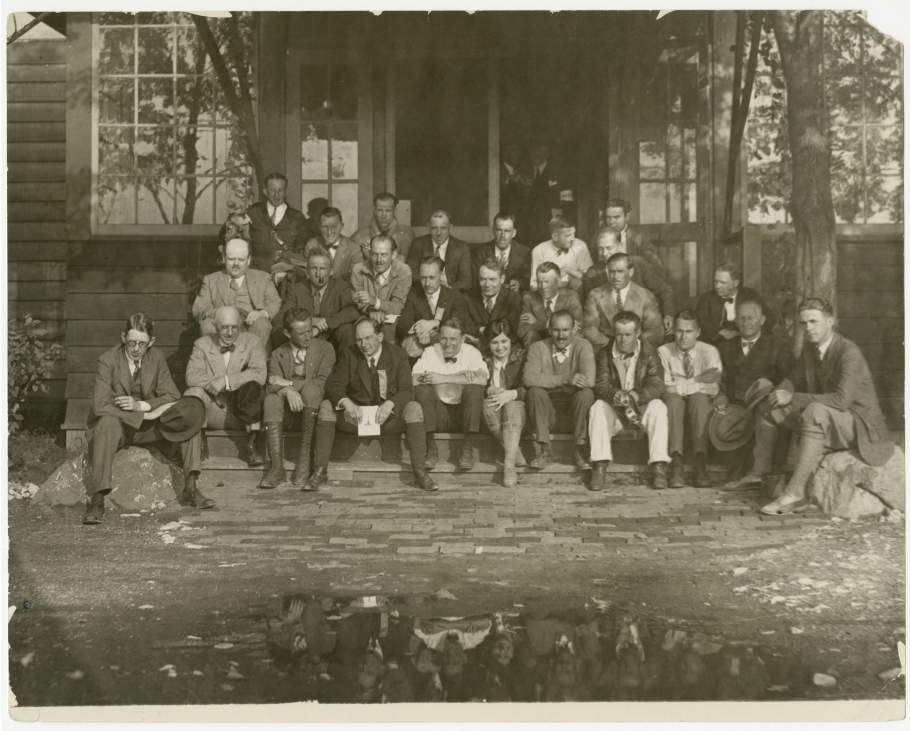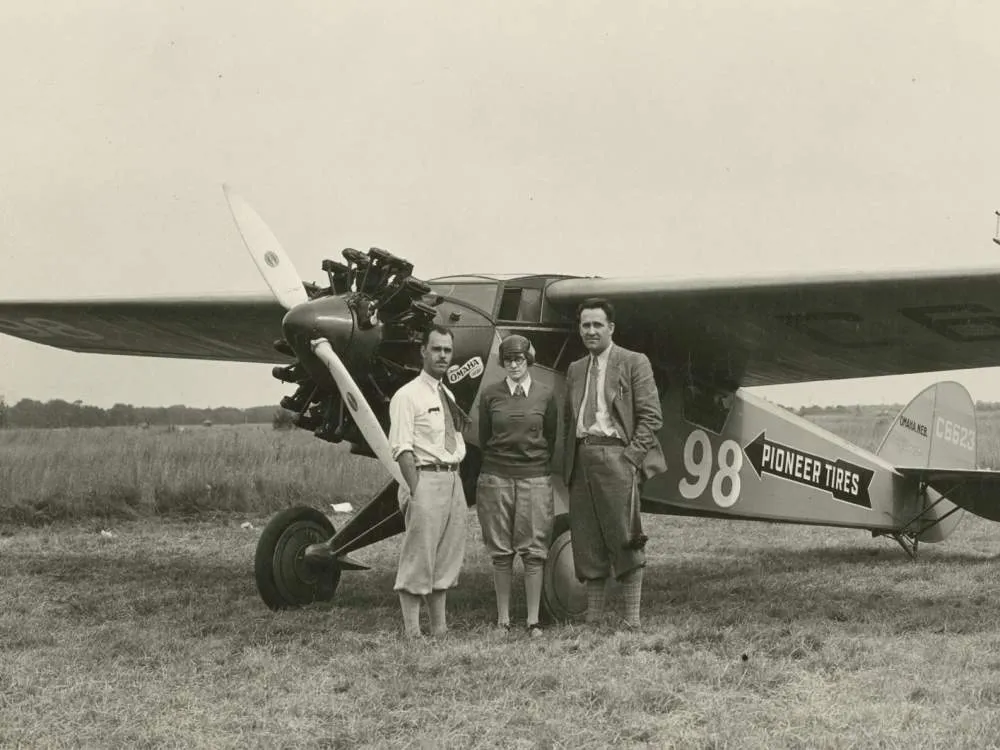Francis D. Bowhan: Osage Pilot
Francis Dawson, whose heritage was almost always included in newspaper coverage of his flights (usually with the generic term “Indian”) remains a name to be remembered in Osage County, Oklahoma.
:focal(500x375:501x376)/https://tf-cmsv2-smithsonianmag-media.s3.amazonaws.com/blogging/featured/PhWD_03w.jpeg.jpg)
Francis Dawson Bowhan was born on April 30, 1901 in Elgin, Kansas to Mart and Ida Bowhan. Ida May Trumbly, his mother, was a member of the Osage Nation, her family genealogy tracing back generations. Ida’s father, Francis Trumbly (most likely her son’s namesake), was a councilman and prominent attorney in Pawhuska, the capital of the Osage Nation. According to family lore and census records, her family, along with many others, moved to the land purchased by the Osage in 1872. Mart Bowhan was a white man from Kansas who set up a harness and saddle manufacturing business in Pawhuska around the turn of the century. Ida and Mart married on September 12, 1899.
Francis D. Bowhan grew up on Main Street in Pawhuska. The 1910 Census mistakenly enumerated him as Mart and Ida’s daughter. On the special Census form for the “Indian Population,” extra questions reflected what the white Census Bureau thought it needed to know about the Native American population: proportion of other blood (Indian, White, Negro), whether or not they were living in polygamy, and, if so, were the wives sisters. Ida Bowhan was recorded as 1/8th Osage and Francis and her other children 1/16th. Ida (listed as the Osage head of household, since her husband was white) and her children were counted every year by the Bureau of Indian Affairs Indian Census Rolls. Under the Osage Allotment Act of June 28, 1906, she and her children were “entitled a headright share in the distribution of funds from the Osage mineral estate and an allotment of the surface lands of the Osage Reservation.”
Bowhan attended school in Pawhuska and then Wentworth Military Academy in Lexington, Missouri (following in the educational footsteps of Osage aviator Clarence L. Tinker, later the first Native American in the U.S. Army to reach the rank of major general). At age 21, Francis Bowhan married Charlotte Blair (born in West Virginia), age 19, on June 17, 1921 in Oklahoma (interestingly, they filed for marriage again in 1934 in Indiana, according to Ancestry). Their daughter Frances (nicknamed Frankie) was born in 1923 (Indian Census Rolls usually listed Bowhan’s daughter as Evelyne, born in 1922).
Aviation was booming in Wichita, Kansas, in the early 1920s and Francis Bowhan was at the heart of the scene. Charlotte was his frequent flying companion. Bowhan marketed his Osage heritage and he was often known by (and would sign with) the stereotypical nickname, “Chief.” One of his many business ventures was “Chief’s Flying Circus,” a barnstorming enterprise operating from Kansas, south to the Rio Grande. He underwent trials to earn his pilot’s license on October 25, 1923, in a Laird Swallow. Carl H. Wolfley, district governor of the National Aeronautic Association (NAA), and Walter H. Beech, test pilot and manager for Swallow Aircraft Company at the time, served as witnesses. The NAA issued license number 6068 to Bowhan on December 13, 1923.
Beech left Swallow in 1924 to start his own company, named Travel Air Manufacturing company. When Ford announced the 1925 Reliability Air Tour, to promote commercial aviation, Beech asked Bowhan to pilot Travel Air #2, a Travel Air B-6 with OX5 engine.

Two passengers joined Bowhan—his wife, Charlotte, and Thomas Day. Together they navigated the circuit from Ford Airport, Michigan with stops in Fort Wayne, Chicago, Moline, Des Moines, Omaha, St, Joseph, Terre Haute, Indianapolis, Columbus, Cleveland, and back again to Ford Airport! There were a few mishaps along the way. On October 2, the Detroit Free-Press reported that Bowhan’s aircraft “which descended in the storm in Missouri, descended again today for water when the motor became overheated.” Ever aware of the purpose of the flight, the newspaper quickly spun the incidents as “safety demonstrated.”
The 1925 Ford Reliability Tour was not set up like a race. They considered a perfect score to be completion of the route. All 11 aircraft with perfect scores were awarded $350 and their names engraved on the Edsel B. Ford Reliability Tour Trophy—“Chief Bowhan” is listed second on the 1925 plaque (the October 19, 1925 issue of Aviation credited “Chick” Bowhan with the milestone).

Bowhan was known in Wichita as being willing to fly for almost anyone. In 1927, he took the position of test pilot for Cessna. He entered the 1928 Cleveland Air Races with a Cessna owned by F.J. Grace of Omaha, Nebraska. Grace, owner of Pioneer Tires, and his wife, Mary, were to be Bowhan’s passengers for the “Class B” event. Just before the races, Bowhan and nine other pilots sent a petition to the starting committee: “We, the undersigned, wish to notify you that we are withdrawing from the Class B race as a protest against the Laird and Waco entries, which are special speed jobs and not regular stock models. Our conception of the race led us to believe that all planes were to be strictly stock productions. We hereby request that our entries be withdrawn.” Bowhan ended up being the only pilot who withdrew from the competition. Soon after in November 1928, Bowhan went to work for Grace at Pioneer Tires. It was implied that Bowhan was asked to leave Cessna due to violating the altitude limit over Wichita.

Bowhan’s heritage was almost always included in newspaper coverage of his flights, usually with the generic term “Indian.” When he and Travel Air manager B.F. Billings made what was considered to be the longest air delivery in the United States on November 23, 1925, he was described as “Chief F.D. Bowhan, a pilot of Indian extraction.”
Feature articles took more stereotypical liberties with Bowhan’s background. The Detroit Free Press on September 29, 1925 did go beyond “Indian” to describe Bowhan as an Osage. But then it described their inspiration to fly as a way of “keep[ing] in touch with civilization from their isolated ranch in the inhospitable Osage Indian country.” Charlotte did admit in a November 8, 1925 Brooklyn Daily Eagle that it was an hour and a half drive from their ranch to Pawhuska on poorly paved roads, as opposed to a fifteen minute flight. But the rest of this spotlight on “Princess Charlotte” and her husband “Chief Gray Eyes” was full of racist language and stereotypes.
By 1935, Bowhan lived in Glendale, California, where he was employed as an airline pilot. The 1940 Census found Charlotte and Bowhan in Prairie Township, Arkansas. When he completed his World War II draft card, he was living in Cuero,Texas, flying for Brayton Flying Service. By August/September 1940, he was part of a group of volunteer aviators on the Manchester Brigade bound for the United Kingdom to serve with the British Air Transport Auxiliary’s (ATA) ferrying services.
Bowhan’s contract with the ATA was terminated in October 1940 due to a “failure to obey instructions.” In a February 24, 1941 article in Texas’s Victoria Advocate, Bowhan recalled his time in the UK. Upon completion of a training course on British aircraft in Bristol, they were assigned to ferry aircraft between the factory and airfields or between fields. He noted that he was more afraid of local farmers’ reactions to parachutists than German bombing attacks. He heaped high praise on the British war efforts: “Britain is getting stronger every day and the people are ready for anything that might come.”
Francis D. Bowhan died of cirrhosis on April 23, 1944 in Kansas City, Missouri. At the time he was working as a pilot instructor. His obituary in the Osage County News noted that he had been ill for over a year. He was buried in the family plot in Pawhuska. Bowhan remains a name to be remembered in Osage County, Oklahoma.
